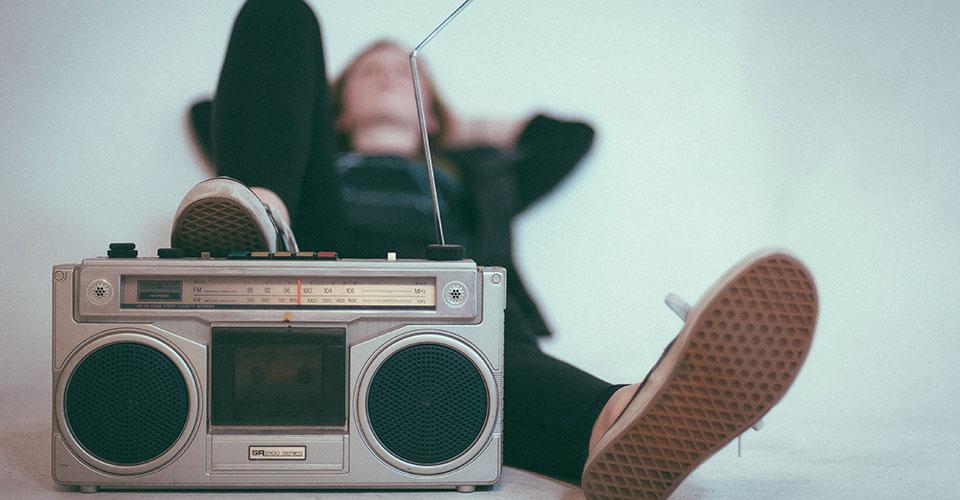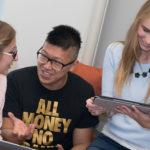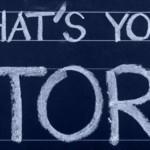
Mikko Romppanen
It is somewhat surprising to realize that some students can make their way through the studies and not before than in the final stage of their studies these, sometimes quite severe, difficulties stand out. As a teacher in Häme University of Applied Sciences (HAMK), I have repeatedly faced situations, where the students have had considerable challenges in literal expression when writing their final thesis.
We should seriously concentrate in developing more varied possibilities for all the students to enable them to accomplish their studies in higher education. The status of a textual report as a dominating media can also be questioned in this context. Fortunately, the technical development keeps creating more possibilities for alternative ways of accomplishing assignments also in higher education.
Learning difficulties in higher education
Kanerva (2017) has stated in her Master’s thesis that many higher education students with learning difficulties face different kind of psychological symptoms during their studies. The students with dyslexia reported more anxiety than other students. Studying is usually a social situation for the students and therefore the anxiety experienced in the context of studies can make other social situations more difficult, as well. Dyslexia has proved to have a lot to do with low self-esteem. Students with dyslexia have also been reported to suffer often from depression. (Maag & Reid, 2006)
Sometimes the institutions of higher education can maintain standards and vision of what is normative and appropriate way of procedure in higher education This potentially excludes students with learning difficulties who might consider themselves as outsiders. Maintaining this kind of images and normatives can be unconscious, but it still goes on in the context of higher education. (Deegan, 2010)
There are many possibilities to provide students with learning difficulties with special arrangements, but sometimes the students can feel that it is stigmatizing for them (Mortimore & Crozier, 2006). It is good and necessary to have all these possibilities when considering the possible learning difficulties in higher education.
However, it might be very good to have a system where the students could naturally have wider range of possibilities for accomplishing their assignments without having to underline the possible difficulties or challenges in their studies and learning. Usually, nobody likes being diagnosed as handicapped or different. This might also be a reason for the fact that students use their possibilities for special arrangements less than they would have right to.
Moriarty and Scarffe (2019) describe two approaches towards disability; the medical model of disability and the social model of disability. In the first model, disability is defined as a problem that needs to be fixed. In the second model, disability is defined as a natural form of diversity that should be accommodated to society with optimal outcomes. (Moriarty & Scarffe, 2019, pp. 51–52)
Olaussen, Heelan and Knarlag (2019) refer to Deci and Ryan (1985) when underlining the importance of internal motivation. External motivation is affected by external influences. Likewise, the reward comes from the surroundings, such as the recognition one gets from others. When on the other hand a person is motivated from within the activity, the reward is in the activity itself. Research shows that inner motivation is important for people to engage in their own learning and development.
According to Deci and Ryan (1985) the inner motivation in order to last has to satisfy three basic psychological needs; the need for self-determination, the need for competence and the need for belonging. The Universal Design of Learning (UDL) approach includes basically all these three psychological needs. (Olaussen, Heelan, & Knarlag, 2019, pp. 16)
Design and implementation of the initiative
This article enlightens the initiative that was used in a Bachelor’s thesis process of three students in the Häme University of Applied Sciences school of wellbeing in the degree programme of social services. The video-documentary was used as a part of Bachelor’s thesis as an alternative and supplementary media. This initiative gave the students a possibility to express themselves more freely and gave them a chance for more fruitful learning experience when they could engage their strengths to this thesis project. This is an example of how video could be used as an alternative media in the thesis process in higher education.
McGuire and Scott (2016) collected together groups of students with learning difficulties and asked them to find solutions for challenges in studies and graduation. Some of the nine main UDL principles (Padden, o’Connor, & Barret, 2017) stood out in the article by McGuire and Scott (2016). These principles are presented here.
a) Flexibility in Use: Instruction is designed to accommodate a wide range of individual abilities. Provides choice in method of use.
b) Size and Space for Approach and Use: Instruction is designed with consideration for appropriate size and space for approach, reach, manipulations, and used regardless of a student’s body size, posture, mobility, and communication needs.
c) A Community of Learners: The instructional environment promotes interaction and communication among students and between students and faculty.
d) Instructional Climate: Instruction is designed to be welcoming and inclusive. All students are supported but also expected a lot of. (CAST, 2018)
“Songs of Life” documentary
I had a group of three students in Häme University of Applied Sciences (HAMK) doing their thesis in the school of wellbeing for the degree programme in social services. All three students had been very active in music activities during their studies. At HAMK, the culture- and art-based methods are an essential part of the curriculum in the school of wellbeing. Art-based methods can be used in a variety of ways with many target groups in social work and education. Therefore, also their topic for the thesis was important and of general interest in our faculty. (Huss & Sela-Amitz, 2018)
The students had all participated both in module-teaching in art-based methods as well as in extra-curricular musical activities at HAMK. In general, the students at HAMK have been very active in creating musical performances and concerts to varied target groups and audiences.
At HAMK, we imply the theoretical approach of social pedagogy. The idea of social pedagogy roots back to Paulo Freire’s (2017) Pedagogy of the Oppressed and some other important thinkers of the last century, such as Paul Natorp (1854–1924) and Herman Nohlin (1879–1960). Socio-cultural inspiration (Kurki, 2000) is an approach and attitude where people are supported to become stronger actors in their own lives. The arts have traditionally been an important method of sociocultural inspiration when working with communities in different contexts.
In the video-documentary, the students interviewed their fellow-students about their experiences of the empowering moments they have had with music. Stories themselves were very touching and diverse. The students made an excellent job of accomplishing interviews and editing the material. Here is the link the documentary “Songs of life”. https://youtu.be/n30PsxFZQ5c
The Initiative in the frame of UDL (Universal Design of Learning)
The students were already well familiar with making videos and all the equipment needed in the process. My role was mainly to encourage them and share ideas about how to accomplish their task both with the report and the documentary.
The three basic guidelines for UDL, the so-called why, what and how of learning, are:
- Multiple means of representation = HOW of learning
- Multiple means of expression = WHAT of learning
- Multiple means of engagement = WHY of learning
(CAST, 2018)
This initiative of the video-documentary was especially connected to the last two principles, which are multiple means of expression and multiple means of engagement. Applying video and its possibilities in documentary-making was an effective way of engaging the group to the thesis-process. As we know, the ability to express oneself has also a lot to do with our confidence and self-esteem. This way the group could really make use of their strengths, skills and creativity. (Educause, 2015)
When it comes to the means of engagement, the “why” of learning, there are some further principles that add to the ones mentioned above. Recruiting interest means for example optimizing individual choice and autonomy and minimizing threats and distractions. These principles were present in the process. (CAST, 2018)
Sustaining effort and persistence means for example fostering collaboration and community and heightening the salience of the goals and objectives. That was also happening in our dialogical process as they were working as a team for the defined goals. When it comes to the means of expression, we can facilitate the expression by using multiple media for communication. In this thesis process, video was used as a supplementary medium of communication in the process. (CAST, 2018)
How do we know it worked?
The documentary was an excellent piece of work and supplemented the textual report very well. The students themselves were very satisfied with their achievement. I have thereafter showed the documentary to other students in HAMK as a part of my pedagogic material when teaching art-based methods and as an example of an alternative way of accomplishing one’s thesis or other assignments during the studies.
The feedback from other students has been very encouraging, as well. The documentary beautifully and skillfully presents the power of music and meaningful songs in the form of touching and well-edited stories. The empowering potential of music is well described and presented in this documentary and the literal report clarifies the healing power of music excellently.
The whole process was very interesting and also pretty challenging in the beginning. There was quite a long period of time when the process did not really proceed, but once the process got going the creative potential and talent of this enthusiastic group was unleashed. My role as a teacher was to encourage and support the students altogether and what it came to this new initiative of documentary making. There was time spent in discussing and ripen the ideas during the process.
After the process was finished, I have pondered and developed ideas around this kind of working method extensively. The students themselves considered that the possibility to make this documentary as a part of the thesis-project was very beneficial for them since it gave an alternative and more practical way of engaging and learning. Making videos and documentaries as a part of the thesis or even as a main product of the thesis could be done much more often than we do at the moment.
Reflections and ideas
It is very easy to get the good enough equipment for video-making nowadays. Basically, a good mobile phone or a pad could be enough for making video-documentary. Video is a very cheap medium today and editing can also be done in mobile or in a pad. Young people are familiar with videos and basically it is a very handy way of getting an alternative tool for expressing oneself when compared to the traditional written report.
Even though writing is obviously a beneficial way of learning, it might also be overrated when it comes to learning and internalization of things. Today when accessibility and equal rights are very much at the center of the conversation, it is very important also in higher education to find different ways of expression.
Once videos, podcasts and other means of producing information are established and approved ways of expressing oneself, we do not even necessarily need to underline someone’s need for special aid or support, but we can simply use multiple ways of doing things when creating and sharing knowledge. Inspired by this experience with “Songs of Life” project I have also given my students a possibility to make podcasts instead of a written report. The feedback from the students has been very positive.
It is also very important to understand that using alternative media in making thesis not only gives someone an alternative possibility to express himself/herself, but it truly opens a magnitude of new ways and possibilities for universities to enrich the research that is done there. It also opens the academical research for a much wider audience. For example the original video documentary, “Lauluja elämästä” (“Songs of Life”), has been opened more than one thousand times in YouTube. What would be the approximate number of times a written thesis would be read or even opened – probably less than ten per cent of that.
The alternative ways of expressing not only helps the individuals with special needs but also open a lot of new possibilities that can help us all and the society in general. There is also another thesis in YouTube by Julius Valjakka (2013) in the form of a video-documentary. “The Wonder of Fanaticism in Football” (2013) has been watched as much as 2177 times. Also this thesis in Aalto University included a written report (31 pages) and a documentary (41:22 minutes).
Possible challenges in using video and documentary as part of a thesis or even as a whole thesis might be connected to evaluation. Is the learning result that is displayed in form of the picture or a video comparable to the learning results that are evidenced in written format?
We should actively search for new and more useful and efficient ways of giving feedback to the students so that they would genuinely have a change to develop and grow as human beings and as professionals. At the same time the development of technology opens more and more possibilities basically for everyone for new ways of expression. We as teachers should not be the ones to slow down the evolution of learning.
Author
Mikko Romppanen is a Senior Lecturer at Häme University of Applied Sciences (HAMK) where he teaches Adult Social Work and creative methods to Social Services students. Mikko is also a Music Therapist specializing in Psychiatry. At the moment, Mikko does not have a clinical practice as a therapist but concentrates in teaching at HAMK. Mikko is also part of the teaching team in Basic Studies of Music Therapy at the University of Jyväskylä in the department of Music, Arts and Culture Studies.
References
CAST (2018). Universal Design for Learning Guidelines version 2.2. Retrieved February 26, 2020 from http://udlguidelines.cast.org
Deegan, M. (2010). “Feeling normal“ and ”feeling disabled”. In S. Barnartt (Ed.), Disability as a Fluid State (pp. 25-48). Research in Social Science and Disability, Vol. 5. Bingley: Emerald Group Publishing. https://doi.org/10.1108/S1479-3547(2010)0000005004
Educause. (2015). Universal Design for Learning. Retrieved February 26, 2020 from https://library.educause.edu/-/media/files/library/2015/4/eli7119-pdf.pdf
Freire, P. (2017). Pedagogy of the oppressed. London: Penguin Modern Classics.
Huss, E., & Sela-Amitz, M. (2018). Art in Social Work: Do We Really Need It? Research on Social Work Practice 29(6), 721–726. https://doi.org/10.1177%2F1049731517745995
Kanerva, H. (2017) “En aseta sitä mun osaamisen tielle”. Korkeakouluopiskelijoiden kokemuksia ja ajatuksia lukivaikeudestaan [”I will not let it stop me from succeeding”. Experiences and thoughts about dyslexia by dyslexic university students and university of applied sciences students]. Master’s thesis. Logopaedics. Faculty of Medicine. University of Helsinki. http://urn.fi/URN:NBN:fi:hulib-201706074705
Kurki, L. (2000). Sosiokulttuurinen innostaminen: muutoksen pedagogiikka [Sociocultural inspiration: pegagogy of change]. Tampere: Vastapaino.
Maag, J. W., & Reid, R. (2006). Depression Among Students with Learning Disabilities: Assessing the Risk. Journal of Learning Disabilities 39(1), 3–10. https://doi.org/10.1177/00222194060390010201
McGuire, J. M., & Scott, S.S. (2006). Universal Design for instruction: Extending the Universal Design paradigm to college instruction. Journal of Postsecondary Education and Disability, 19(2), 124–134.
Mortimore, M., & Crozier, W. R. (2006). Dyslexia and difficulties with study skills in higher education. Studies in Higher Education, 31(2), 235–251. https://doi.org/10.1080/03075070600572173
Moriarty, A., & Scarffe, P. (2019). Universal Design for Learning and strategic leadership. In S. Bracken & K. Novak (Eds.), Transforming higher education through universal design for learning – an international perspective (pp. 51–52). Abingdon: Routledge.
Olaussen, E. J., Heelan, A., & Knarlag, K. A. (2019). Universal design for – license to learn: A process for mapping a Universal Design for Learning Process on to Campus learning. In S. Bracken & K. Novak (Eds.), Transforming higher education through universal design for learning – an international perspective (pp. 11–32). Abingdon: Routledge.
Padden, L., O’Connor, J. J., & Barrett, T. (2017). Chapter 1: Introduction. In L. Padden, J. O’Connor, & T. Barrett (Eds.), Universal Design for Curriculum Design: Case Studies from University College Dublin. Dublin: Access and Lifelong Learning University College Dublin.
Valjakka, J. (2013). The Wonder of Fanaticism in Football [Video]. Retrieved February 26, 2020 from https://www.youtube.com/watch?v=O_U91O_sy70





